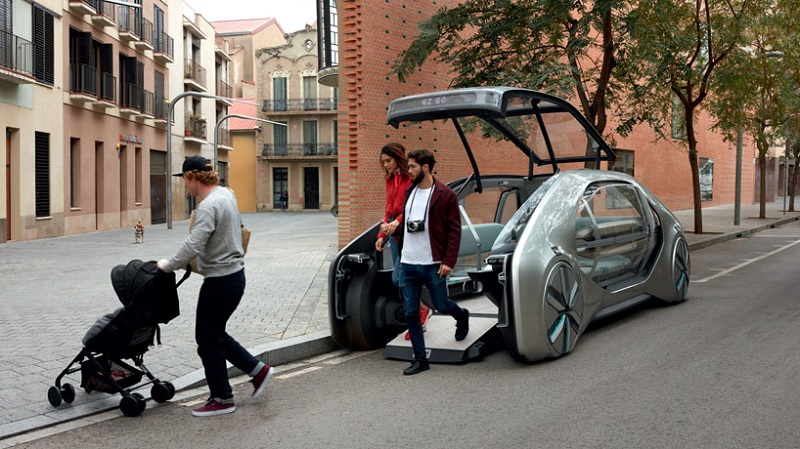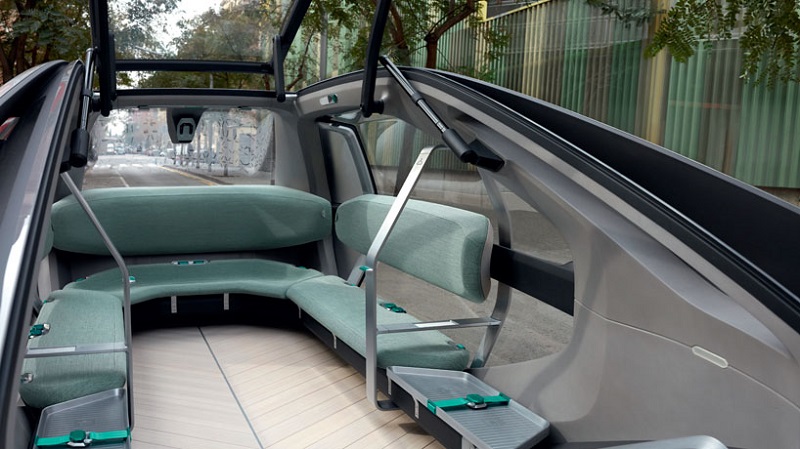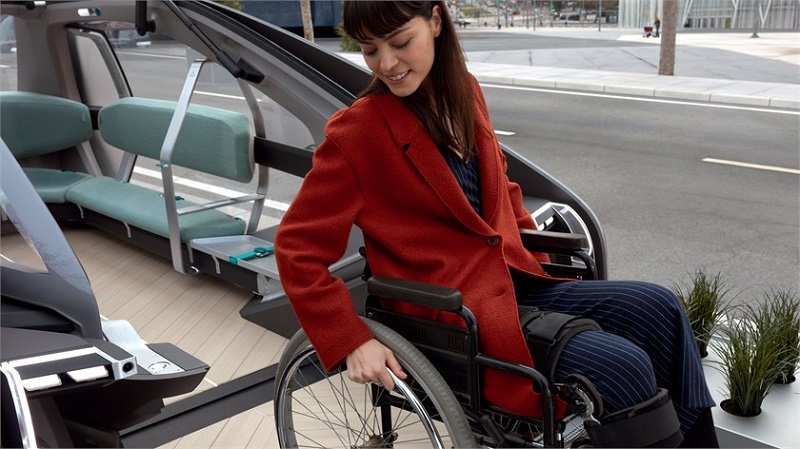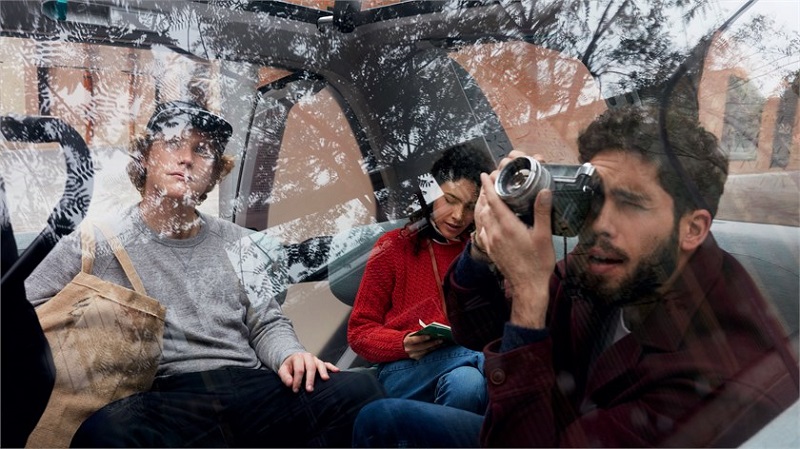EZ-GO: Renault’s Driverless Transport System is a “Robot Taxi”
Easily-accessible, driverless, and perfect for small groups, Renault’s new “EZ-GO” concept is essentially a futuristic form of ridesharing, boasting a sleek and almost entirely transparent design. The main difference is that the EZ-GO is more akin to buses and other modes of public transit than it is to the average personal vehicle. Its speeds are intentionally slow, which seems like a plus considering how the cabin is set up, with everyone facing each other in a big “U” shape. Riders are essentially in a bubble, looking out onto the city as they make their way to their destinations. If it were available to you, would you prefer this kind of service over a more conventional transit experience?

Renault, a French automobile manufacturer established in 1899, imagines the EZ-GO as part of new “smart city ecosystems,” supplementing individually-owned vehicles and mass transit rather than replacing them altogether. For some urbanites, the system could hit the sweet spot between the low cost of public transportation and the comfort of a personal vehicle, negating the need to find parking, pack oneself in amongst crowds, or stress over driving in heavy traffic.
The EZ-GO itself is equipped with four-wheel steering and a remote supervision system that can take over control of the vehicle if necessary. It’s also a zero-emissions vehicle, and it interacts with pedestrians, bicyclists, and other drivers in its environment using lights and sound signal warnings.



Each EZ-GO would be able to transport up to six passengers at a time, with a built-in ramp accommodating both wheelchair users and people with strollers and wheeled suitcases. The wide benches are reminiscent of those found in subways and light rail cars, but they do offer seatbelts. Screens inside the vehicle display information about the city that might be useful to any visitors on board. The car can either be summoned by an app or rented straight from a hub somewhere within the city, depending on each individual operator’s setup.
Renault aims to launch its ride-hailing robotic taxi services by the end of 2022 as part of its “Drive the Future” plan. The company will operate its own vehicles to sell on-demand rides while making fleets available to both public and private entities and organizations. A particular city might have its own EZ-GO service, for example, but the app side of the equation would still be controlled by Renault.

Here’s what the company has to say about it:
“A small group of friends, just five people. As their evening out draws to a close, they decide to go home. Couldn’t be simpler: they use their smartphone to order a ‘robo-vehicle,’ a driverless car specifically designed for shared urban travel. After a short wait, the vehicle arrives, lets them get on board, and takes each of them to their destination: right to their door for some, or at a dedicated station in a district where they can find somewhere to go on partying. Just as it should be, in the heart of a city that’s become smart and ultra-connected.”

“This vision of city-center travel in the future can be applied to other people and situations: a business person going to a meeting, a group of tourists strolling from monument to monument, a mom and her baby going to the pediatrician, a couple traveling back from the airport, an elderly person going to see her daughter, etc. They all have one thing in common: they use EZ-GO, the urban shared robo-vehicle and mobility service designed for all.”




